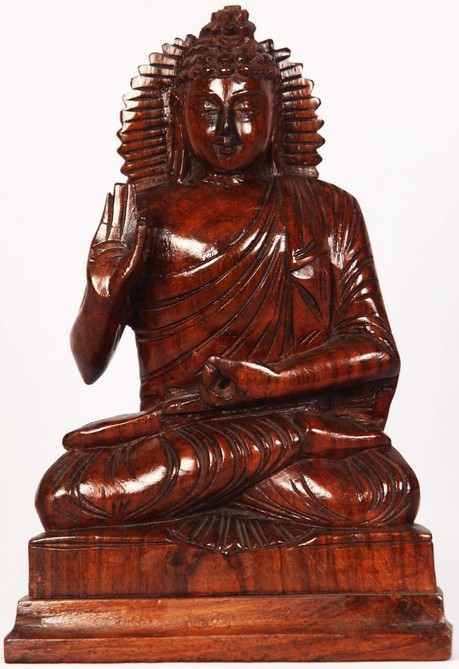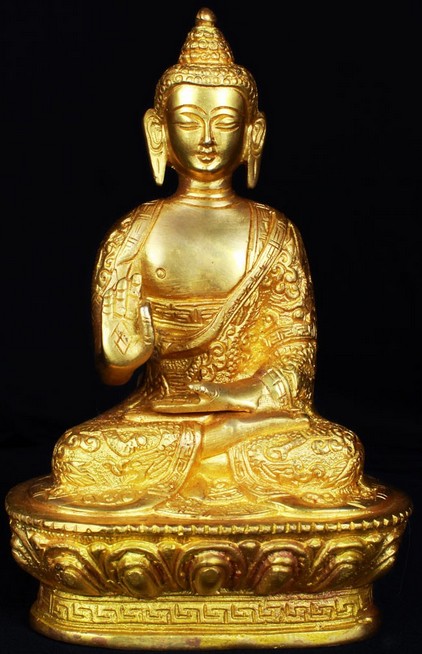Once upon a time there was a small prince called Siddhartha who was troubled by the same questions that children of today are. Why did my aunt die? Why do new births occur? Why my wishes are not coming true? They wonder about nature, happiness and the very existence of living beings.And so on….
The prince was born around 566 BC, in a small kingdom called Kapilavastuto King Suddhodana and Queen Maya.Soon after he was born, the wise men predicted that the young prince would become a ‘renouncer,’ someone who transcends the earthly life. When the king heard this, he was deeply disturbed, for like any other father he wanted his son to become a mighty ruler of his kingdom. Hence, he told Queen Maya, “I will make life in the palace so pleasant that our son would never want to leave.”
At the age of sixteen, Prince Siddhartha married a beautiful princess, Yasodhara and soon had a son. The king built them three palaces, one for each season, and lavished them with luxuries and all amenities. The Prince passed his days in enjoyment and never thought about life outside the palace.
Even though prospered with all available luxuries and amenities, the prince became disheartened with the palace life and always wanted to see the outside world.He made four trips outside the palace and saw four things that changed his life. On the first three trips, he saw sickness, old age worries, and death. He saw people in poverty, bound by sufferings. Soon he realized that the outside world was totally different from what he had been experiencing in his palace within the walls. He asked himself, “How can I enjoy a life of pleasure when there is so much suffering in the world?” On his fourth trip, he saw a monk who had given up all his worldly pleasures to seek an end to his sufferings. “I shall be like him” thought prince Siddhartha.
Many questions like “Why people undergo suffering?”“Why they weren’t always happy?”“Why do birth and death occur?”“What causes our happiness and sadness?”kept bothering him. The prince became eager to find answers for all these questions as they troubled him every day hence forth.Siddhartha became conscious then that his very purpose of existence was to seek relief for these sufferings.
The calling to find the answer to the suffering in the world was so strong that he left his wife, son, wealth and kingdom behind and moved on to follow this calling.
Siddhartha became a traveling monk. He visited many places. He even cut off his hair and wore ragged robes to show that he had renounced the worldly lifestyle. He called himself Gautama and wandered from place to place. In his search for truth, he studied with the wisest teachers of his day. None of them knew how to end suffering, so he continued the search on his own.
For the next six years he practiced severe self-discipline thinking this would lead him to enlightenment. He sat in meditation and ate only roots, leaves, and fruit. He avoided any kind of luxuries and, pleasures offered to him. He worked hard for his food. At times he ate nothing. He could endure more hardships than anyone else, but this did not take him anywhere.He thought, “Neither my life of luxury in the palace nor my life as an ascetic in the forest is the way to freedom. Overdoing things can not lead to happiness. He began to eat nourishing food again and regained his strength.
One summer, on a full-moon day, he sat under the Bodhi tree in deep meditation and said. “I will not leave this spot until I find an end to suffering.” During the night, he was visited by Mara, the demon, who tried to divert him from his virtuous pursuit of finding the truth. First he sent his beautiful daughters to trap Gautama into pleasure. Next he sent bolts of lightning, wind, and heavy rain. Lastly he sent his evil armies with weapons and flaming rocks. One by one, Gautama met the armies and defeated them all with his virtue.
As the struggle ended, he realized the origin of suffering and how to eliminate it. He had gained the most extreme wisdom and understood the things as they truly were. At the age of 35, he became “the Buddha”. The word Buddha is a loose translation of the Sanskrit word for “Enlightenment”. Gautama became ‘The Awakened One’. From then on, he was called as Shakyamuni Buddha.
For the next forty-five years after the enlightenment Buddha and his disciples were travelledall over the Indiaand spread the good deeds and his teachings.His teachings spread to places and reached more people. Their kindness knew no bounds; they helped everyone along the way, beggars, kings, and slave girls. At night, they would sleep where they were; when hungry they would ask for a little food.
Wherever the Buddha went, he won the hearts of the people because he dealt with their true feelings. He advised them not to accept his words on blind faith, but to decide for themselves whether his teachings are right or wrong, then follow them. He encouraged everyone to have compassion for each other and develop their own virtue, “You should do your own work, for I can teach only the way.”
He never became angry or impatient or spoke harshly to anyone, not even to those who opposed him. He always taught in such a way that everyone could easily understand. Each person thought the Buddha was speaking especially for him. The Buddha told people to help each other on the way.
Once, the Buddha met a monk who was suffering from an infectious disease. The poor man lay in a mess with no one looking after him. The Buddha himself washed the sick monk and placed him on a new bed. Afterwards, he admonished the other monks. “Monks, you have neither mother nor father to look after you. If you do not look after each other, who will look after you? Whoever serves the sick and suffering, serves me.”
Buddha departed this world at the age of eighty, however his compassion and love remains. From then Buddhism isone of the major religions in the world.
The teachings of Buddha go round the world like a wheel that never stops, leading to the central point of the wheel, the only point which is fixed Nirvana. The eight rods on the wheel signify the eight parts of the Noble Eight fold Path.
Right View with wisdom and compassion.
Right Thought as clear and kind thoughts builds good and strong personality.
Right Speech by kind and helpful words, we are respected and trusted by everyone.
Right Conduct. Others know us from the way we behave. Before we criticize others, we should first analyze ourselves.
Right Livelihood. The Buddha said, “Do not earn your living by harming others. Do not seek happiness by making others unhappy.”
Right Effort. Doing our best at all times and having good will toward others without harming ourselves and others.
Right Mindfulness. Being aware of what we think, speak, and do.
Right Concentration. Focus on one thought or object at a time. By doing this, we can be quiet and attain true peace of mind.
Buddha said “The mind is the ground and thoughts are seeds”. Actions are ways in which one cares for the garden. Our faults are weeds. Pulling them out is like weeding a garden. The harvest is real and lasting happiness.
Buddha’s Four Noble Truths of life are:
Life is suffering
Suffering is caused by craving
Suffering has an end
There is a path to awakening
Buddhism is much more than just a religion. It is a way of life, which everyone on earth should be aware of. And the teachings of Buddha are common and relevant to all human beings irrespective of their belief and religion.




